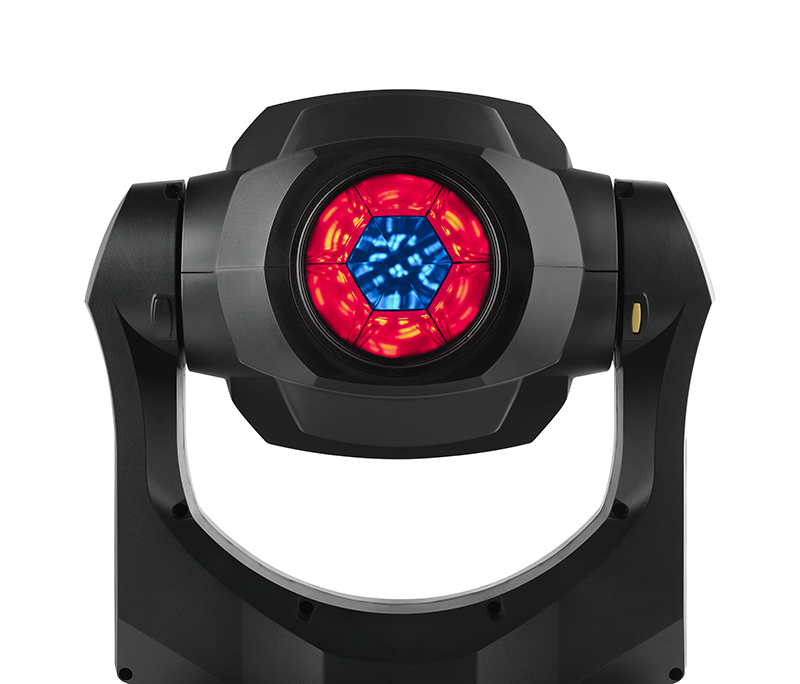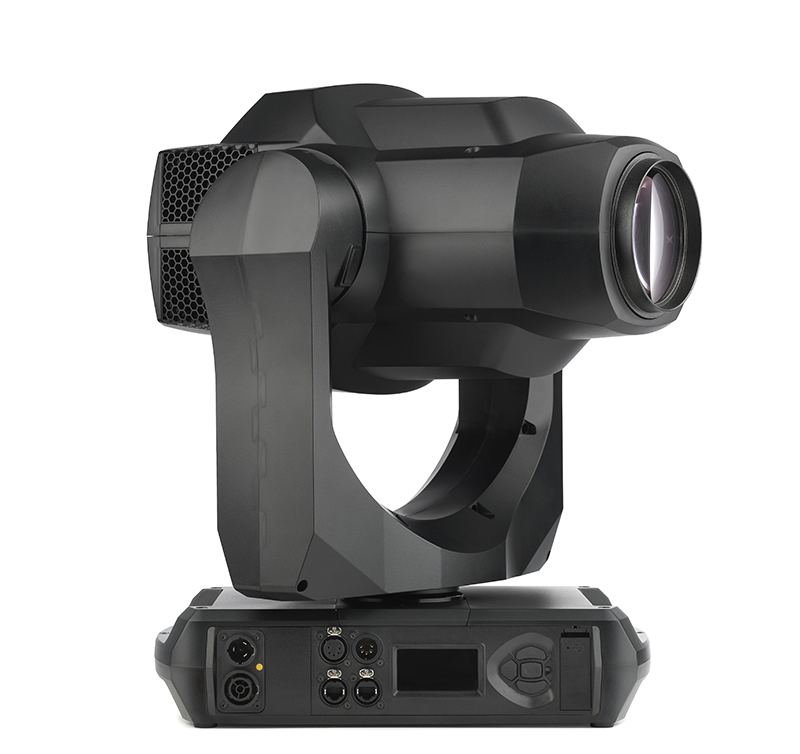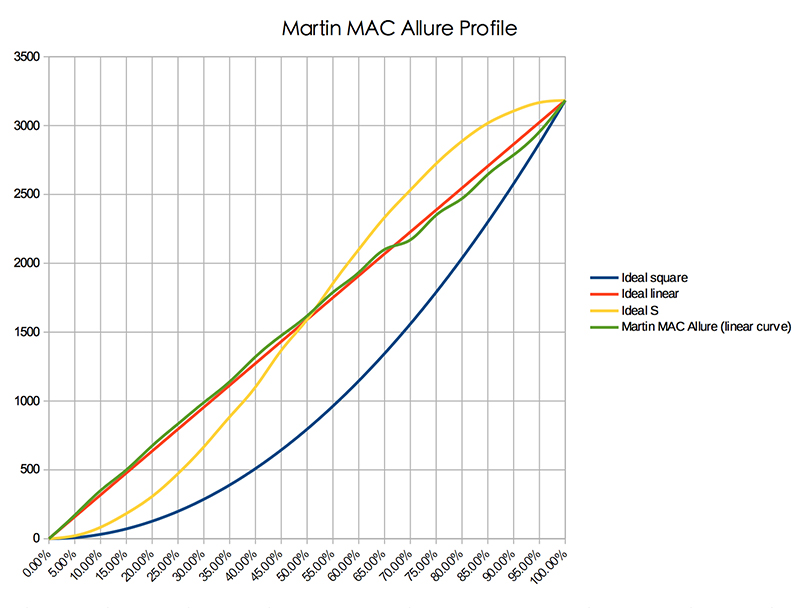
Our collective taste for novelty is the great driving force of the entirety of the production industry. The musician’s craft is built around innovation of sound; rhythm and harmony made modern to tantalize our auditory tastes with The New. Filmmakers tell tales as old as time with fresh perspectives. And we, as purveyors of visual experiences, strive to captivate our audiences with that which they have never seen, and to do that, we need originality in lighting technology.
Years ago, industry engineers tried to create the ultimate so-called “digital light,” a fixture that would produce the lumen output of a conventional 1200-watt arc-source moving light with the versatility of a digital projector, an idea that been tried before but with limited success. Success would continue to prove elusive for this product, because, as it turns out, putting powerful digital projectors into moving heads and having them work the way you want is quite difficult. Lackluster performance aside, however, this idea remains as compelling as ever.
An Alluring Concept
Today’s fixture, Martin by Harman’s MAC Allure Profile, is a fascinating re-imagination of this core visual concept: that in controlling individual sections of a hard-edged light beam, one can create powerful and unique effects. This is not video as projection, neither is it a pure hard-edged moving light, but an amalgamation of the two, from a company known for innovation in their lighting effects.
The MAC Allure has a familiar form factor: a moving head and yoke on a base. The light source is a sealed LED engine developed in-house by Martin by Harman and is user-replaceable as in the Quantum Profile. Here we diverge from the concentric rings of white emitters that characterize their other hard-edged LED offerings. Looking down the lens, one can see that there is a honeycomb-like pattern of seven segments. Each segment has an RGBW LED source driving it; there is no subtractive color mixing in this light. The RGBW chips are topped with a light pipe that guides their lights toward the output. These segments are optically separate from each other, so that when the light strikes a surface, the same honeycomb pattern with definite but subtle separation between the sections is revealed.
The central “pixel” is hexagonal, while the outside sections have rounded outer edges that give the beam a traditional circular shape when all the emitters are on. The light pipe system and combining optics do a decent job of homogenizing the beam, but the raw output of the individual pixels do display a somewhat unevenly-colored field. Given that the optical system is designed to focus at least somewhat on the actual LED dies, this is probably unavoidable, but not objectionable. The goal with this light is to create aerial effects, not to be a key light on actors.
This segmented, controllable beam is the Allure’s innovative conceit — a pixelized hybridization of video and hard-edged lighting. The LED segments can be controlled either via DMX or added as a fixture into Martin’s own P3 video processing unit, by placing the fixture’s “pixels” on top of the video output. Run this way, the output becomes an eruption of pixels in the air, which can be shaped and modified like any other hard-edged fixture. The fixture can switch or cross-fade between DMX control and P3, so as not to limit the user to any one control scheme.
Each “pixel” is a separate 60-watt LED package, for a total LED draw of about 420 watts. I measured the open white output of the Allure at 3,183 lux at five meters at 50% zoom. (This was a fixture at a Martin event that had been running all day, so I was unable to measure any thermal droop.) Dimming is very smooth, with the four user-selectable curves closely following their ideal curves. I measured the color temperature of the raw output at 7,410 Kelvin, which adjusts via a color correction channel and measured from 2,410K to 10,100K. An included strobe channel provides shutter effects, including synchronous strobes, random strobes, and pulses from 2Hz to 20Hz.
Color Mixing and Gobos
Like other Martin additive LED fixtures, the Allure comes with its LED packages factory-calibrated, and this calibration cannot be disabled. In some previous Martin lights, having color calibration on prevented deeply saturated colors from coming out of the system, because the other LEDs would always be dimly glowing to keep the hue perfectly consistent across fixtures. On the MAC Quantum Wash, Martin introduced a mode called “Extended Color” which keeps the white point consistent across units, but as the fixture approaches 100% saturation, the fixture fades the calibration out. With this method, you can get true, deep colors with full saturation while still having the advantages of calibrated whites and pastels.
The Allure also includes a digital “Color Wheel” which uses the pixels to emulate physical glass rolling through the optical field, which can then also be “indexed” and “rotated” via the internal effects macros. Color effects are a very strong point of this light. Chases and effects with the color and dimming look spectacular, especially when combined with gobos or the included prism.
Mechanical effects for the Allure are housed within the light permanently. Somewhat unusually, Martin has chosen not to put the motorized effects on a removable module, which the company tells me is due to the small size and limited number of mechanical features. This includes the gobo system and iris, and a prism. The Allure features six rotating and indexable gobos plus open, and in my opinion, they tend toward being optimized to support a predominantly aerial use, rather than as projections on scenery. Gobos ride in the familiar carriage system and are user-replaceable.
While there is no separate fixed gobo wheel, the fixture has a gobo “overlay” wheel, which is a separate plate permanently attached to the rotating wheel, and gobo positions two and three have fixed gobo overlays for morphing effects. These fixed gobos are replaceable or removable. There’s an iris for beam reduction effects, and a four-facet indexing and rotating prism. Zoom adjusts smoothly from 12° to 36° and covers its range in less than 0.5 seconds. Pan and tilt ranges are 540° and 268° respectively, and both axes of motion were extremely smooth. The fixture completed a full-range pan motion in ~3.1 seconds, and a full-range tilt movement in ~2.4 seconds.
The MAC Allure Profile accepts power in through Neutrik PowerCON TRUE1 in and pass-throughs, and accepts data in through either 5-pin DMX in and pass-throughs, or Neutrik EtherCON ins and pass-throughs — which are passive, so that if the fixture loses power, it will continue passing data downstream. The fixture also accepts DMX via Art-Net and sACN, as well as P3 data, over the EtherCON port. Control schemes from 32 channels in Basic mode to 68 in Extended mode. The Allure stands 60.3 cm (23.74 inches) tall, with a base 385 mm (15.16 inches) by 232 mm (9.13 inch inches) wide, and weighs 17.6 kg (38.8 lbs.).

At a Glance:
Pushing the LED Envelope
Martin by Harman’s MAC Allure Profile showcases the promise of the most creative uses of LED technology. It continues to advance the state of the craft toward a future where focusing on individual diodes can be used to create dramatic colored sprays of aerial pixels. As both a solid hard-edged fixture and a cunning effect luminaire, it offers both solid performance now, and intriguing future development.
PROS: Never-before-seen effects, ability to run via video.
CONS: One should never expect a perfectly white beam output from this effects-type fixture.
FEATURES
- Motorized Focus & Zoom (12° to 36°)
- 540° Pan, 268° Tilt
- Rotating Gobo Wheel
- 4-color RGBW LED Source
- Prism
- 28/64 DMX Channels
STATS
- Light Source: RGBW LED source
- Output: 3,183 lux at 5m/50% zoom
- Voltage: 100-240, 50/60Hz
- Wattage: ~493W (full color)
- Size: 15.16 x 9.13 x 23.74”
- Weight: 38.8 lbs.
- MSRP: $7,000
- Manufacturer: Martin/Harman
More Info: www.martin.com



